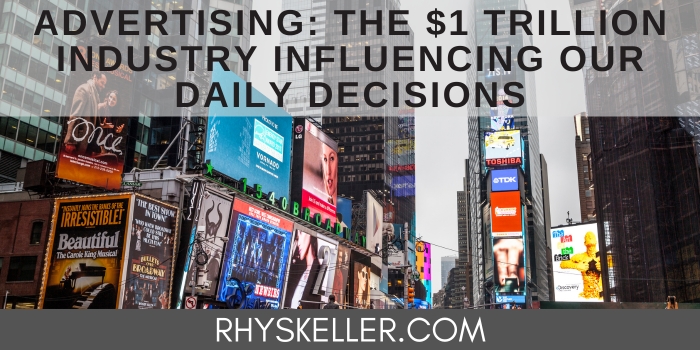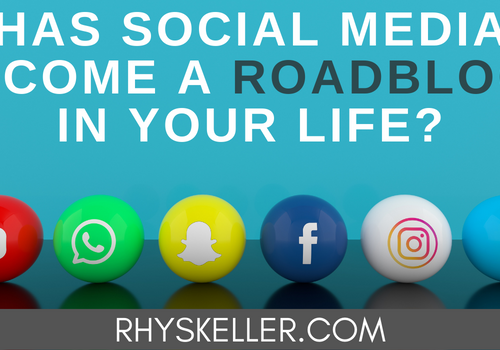A love-hate relationship at the core, advertising is an age old phenomenon living between data-backed science and abstract dreams. From massive sport event commercials to the pesky interrupting ads on YouTube, ads affect just about all of us. Is there a winner or are we all losing the game for our hard-earned dollars on both sides of the advertisement spectrum?
When you buy through my links, I may earn money from my affiliate partners. Learn more.
Global Advertising and America’s Fair Share
America’s global advertising dollars hit just over $200 Billion in 2023, making the land of the free and land of the brave 37% of global ad spending.
Now global, of course, includes the whole world.
At least the parts of the world with accurate analytics and the ability to store and compare data from years past.
Sorry, Myanmar.
Interesting isn’t it that the United States spends so much money advertising to other countries.
In fact, some statisticians predict American global ad spending will double by the end of 2024 to be just under $500 Billion!
Who’s in second place you wonder?
China, of course. But would you believe China spends HALF of what the United States spends on ads?
It may feel surprising, unless you really think about it.
Americans are shoppers.
Buyers of all. Needers of trends. Wishers for more.
Consumerism is truly part of the American dream, is it not?
Having as much as we can…buying whatever we want…never being satisfied with less?
Sure, we could debate it. But we don’t need to look past American debt to know we have a purse-string problem.
While America hopes to sell worldwide (including to ourselves), many other countries are simply focused on selling to Americans.
You remember the recent Temu ad, don’t you? Telling Americans to shop like a billionaire. Because, I imagine, most of us have no idea how billionaire’s shop but surely it must involve buying cheap home decor, fast fashion garments that won’t last past that first dryer cycle, and equipment that sounds too good to be true.
We are like lambs to the slaughter, carelessly following wherever ads tell us to go.
The Most Prevalent Ad Sources Affecting our Buying Decisions
TV and video advertising is in the lead at nearly 80% of all ad dollars.
Remember when ads on TV shows happened every 10-15 minutes? You could watch an entire episode of The Simpsons and know it would only break for ads in the middle of the show.
More recently, most of us can remember when YouTube ads didn’t have their own hate club.
YouTube used to play just a 20-second advertisement near the beginning of a video clip.
Then it became a 30-second after 5-10 minutes.
Now, they play two ads at a time, with the first ad being un-skippable and the second ad easily lasting over a minute!
But we shouldn’t worry, we can avoid ads by shelling out over $20 per month!
Unless we’re talking Amazon Prime of course.
Now, providers are selling ad-free packages that still force some ads…just not all of them.
Crickey.
What are we to do then?
Just operating a normal life causes us and our impressionable children to be bombarded by ads constantly.
Some innocuous and family friendly.
Others embarrassing, shocking, or offensive.
And it’s only getting worse.
With ad revenues continuing to climb, it begs two questions:
Are advertisers getting their money’s worth? Some.
And are we poor saps losing our hard-earned money to ads more than we think? Yes.
Reject Consumerism…Sometimes
Not all ads are created equal.
Targeted ads are those delivered intentionally to someone like us through a medium based off specific criteria.
General ads are just blasted out to all or run repeatedly until some amount of ad dollars is spent.
Targeted ads are the ones that make you look over your shoulder as if Big Brother is watching you.
You know the ones…you are talking about how cold the house is and next thing you know Amazon is emailing you offers on space heaters.
Or you type a gift idea into Google and next thing you know every website you visit is trying to sell you some variety of that thing.
Targeted ads are interesting because, at some level, they’re helpful.
Targeted ads want to give you what you’re looking for.
The biggest problem of course is that you may not be looking for it anymore!
Or, even more troubling, you may be trying not to buy it!
Targeted ads are relentless and once the door is cracked open from you expressing a buying intention somewhere online, the ads won’t stop unless you modify ad settings (which can be hard for non-technical people) or the advertisers deem you a lost cause due to time going by and you not clicking.
Resisting targeted ads takes tremendous willpower because it really is what you wanted…or better said, it’s what you had wanted.
But as people we change.
We may think we need something until our more reasonable mind comes online and lets us know we really don’t.
Did you know, it’s often said our moment of wanting something lasts only 90 seconds?
If we resist a buying decision for 90 seconds, the tugging of our heart and mind will subside.
Do we last that long though?
Consider this: If we see something we want and immediately turn our attention towards something else as a distraction, there is a high likelihood we would not come back to it later.
Are we that strong?
Do we have the fortitude to last a mere minute and a half?
$36 Trillion of National debt would probably give us the answer of no.
How sad. We have become so limited and weak in our ability to navigate life without wanting everything we see or hear about so much so that we go off and get it without being able to afford it.
Creating a Wedge for our Financial Future
Wealth is simply having enough money and time to use it as we desire.
To be truly wealthy, there must be a gap between the money we have and the money we spend.
There’s an expression floating around that to become wealthy, we must drive a wedge between they money we keep and the money we lose.
A wedge is like a 3D triangle. The tip is a small sliver, but the base gets wider and wider as the wedge is driven forward.
This is where the magic happens.
Even the smallest of positive financial decisions can begin growing the wedge.
I remember opening a Roth IRA (which is a fancy word for long term tax-advantaged investment retirement account – which is a complicated way of saying way to grow money) after graduating college.
I just moved to a new town. Moved into my first apartment. And forever cut financial dependency on my parents.
I had some money, but not a lot.
I opened a Roth IRA with $50 because I was able to commit to contributing $25 per month.
It was so small and the interest I was making was laughable.
But it was the tip of a financial wedge. It was a safeguard to not spend $25/mo on toys but move it to the other side of the wedge – the keeping money side.
Fast forward many, many years. That financial wedge continues to slide forward.
Paying off debt is a wedge. Little by little.
Opting for a smaller home is a wedge
Working hard and growing in our career is a wedge.
But one of the biggest financial wedges out there is the control of our eyeballs.
An onslaught of $1 Trillion per year is being thrown at us to buy buy buy.
Turning off the screen…putting down the phone…not flipping through the Sunday paper…not trying to catch up on Superbowl ads…are all effective ways to make the fight easier.
It’s one thing to resist buying what we see.
It’s another to not see things in the first place.
Oddly enough, ads aren’t bad or good. The content within them certainly could be though.
Ads are a medium that allows businesses to be successful.
You’ll see ads all over my website…though I try to keep it to a minimum.
Ad revenue enables businesses to operate and websites like mine to keep going.
But what should we do about it?
Let’s consider where we are weak. Is it social media ads? Is it sports ads? Maybe it’s that holiday magazine from your favorite store.
Wherever we are weakest, let’s put concerted effort there.
Reduce exposure and begin driving a wedge of wealth.



